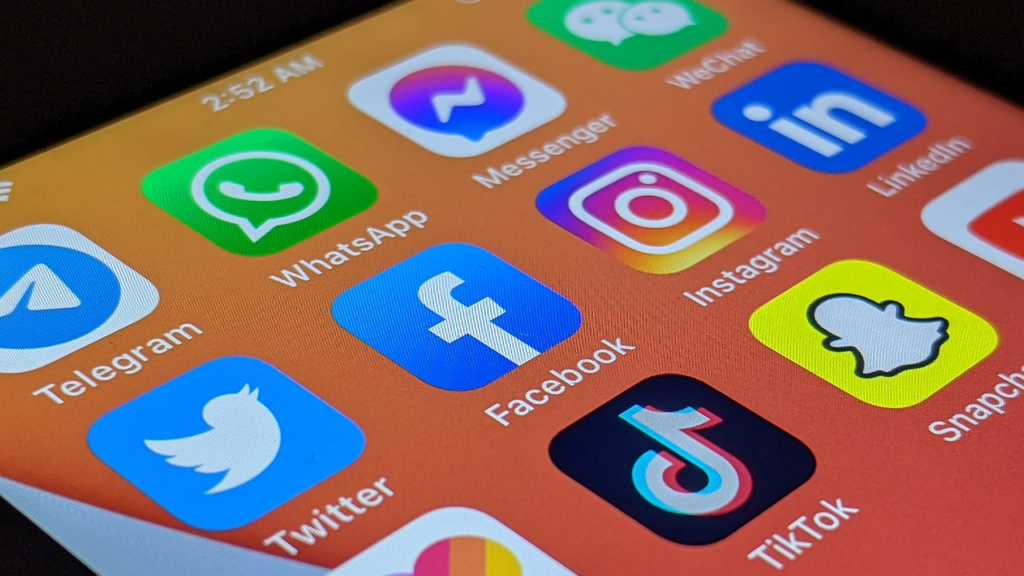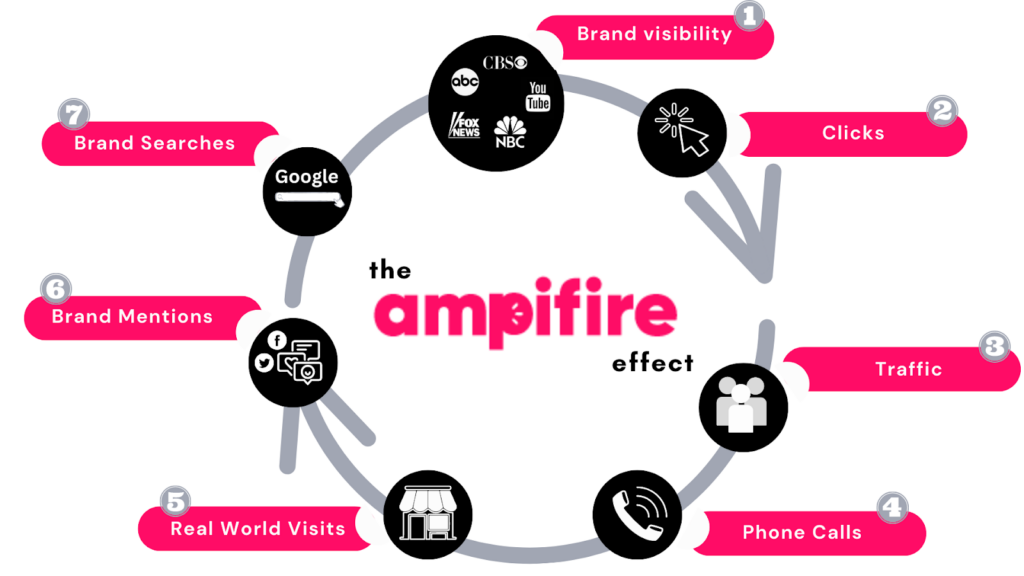Key Takeaways
- Trendjacking is when brands insert themselves into viral trends or cultural moments to gain visibility and engagement without creating elaborate campaigns from scratch.
- Unlike newsjacking, which targets breaking news, trendjacking rides broader cultural trends, making it more accessible and often less risky for brands.
- Successful trendjacking requires speed, brand alignment, and authenticity to allow you jump on trends quickly while ensuring they match your brand values and voice.
- Top examples include Oreo’s Super Bowl blackout tweet, Dunkin’ Donuts’ dress color debate donuts, and Duolingo’s TikTok personality that turned an owl mascot into a viral sensation.
- AmpiFire transforms your single topic into 8 different content formats and distributes them across 300+ platforms, helping you ride trends while building lasting organic traffic beyond just social media.
What Is Trendjacking in PR?
Trendjacking is a PR strategy where brands piggyback on existing viral trends, popular cultural moments, or social media conversations to boost their visibility and relevance. Instead of creating campaigns from scratch, you’re inserting your brand into discussions that people are already having.
When everyone’s talking about something trending on social media, trendjacking is your brand joining that conversation in a creative, authentic way that makes sense for your audience. The beauty of trendjacking is that you’re leveraging momentum that’s already there. The trend has already captured attention and built an audience. Your job is to show up in that conversation with content that’s timely, relevant, and adds value or entertainment.
This strategy has become essential in modern PR because social media moves fast. Brands that can act quickly and authentically often see significant engagement spikes without spending on expensive advertising campaigns.
Why Press Releases Don’t Work Anymore
Smart Businesses Are Moving Beyond Traditional PR
• The Problem: Press releases reach one audience through one channel while your customers are everywhere online. Most get buried within days with poor ROI.
• The Solution: AmpiFire’s AmpCast creates 8 different content formats from one topic and distributes across 300+ high-authority sites including Fox affiliates, Spotify, and YouTube.
What You’ll Learn on PR Zen:
✓ Why multi-channel content delivers 10x better results than press releases
✓ How to amplify your PR efforts across multiple platforms
✓ Real case studies of businesses dominating search, social, video, and podcasts
✓ Cost-effective alternative to expensive PR agencies
Ready to Replace Press Releases? Learn the AmpiFire Method →
Trendjacking vs Newsjacking: What’s the Difference?
Newsjacking
This focuses on breaking news events. When something major hits the headlines, brands create content that ties their messaging to that news story. The classic example is Oreo’s “You can still dunk in the dark” tweet during the 2013 Super Bowl blackout—a response to an unexpected news event.

Trendjacking
Trendjacking rides broader cultural trends, memes, challenges, or ongoing conversations. These aren’t tied to breaking news but rather to what’s popular or going viral on social platforms.
When the “What color is this dress?” debate went viral in 2015, Dunkin’ Donuts trendjacked it by posting donuts in blue-and-black and white-and-gold combinations, perfectly inserting their brand into the conversation.

The key difference: newsjacking responds to events, while trendjacking participates in movements. Newsjacking often requires more caution since news can be sensitive, while trendjacking usually offers more playful opportunities.
The Benefits of Trendjacking for Your Brand
Increased Visibility & Faster Engagement
When you trendjack effectively, you’re putting your brand in front of audiences who are already engaged. You’re adding to something they’re already interested in. Trending content gets attention fast, and your post can gain traction in hours rather than days or weeks.
Humanizes Your Brand
Trendjacking shows your brand is paying attention to culture, not just selling products. It demonstrates that there are real people behind your social accounts who understand what your audience cares about right now. This human touch builds stronger connections with your audience.
Cost-Effectiveness & Drives Traffic
Traditional advertising campaigns require significant budgets for creative development and media buying. Trendjacking can be done with a small team that monitors trends and creates quick-turnaround content.
You’re essentially getting free distribution by riding the wave of existing conversations. When done right, it drives traffic and conversions by directing attention toward your website or product pages.
Examples of Successful Trendjacking

Oreo’s Super Bowl Blackout Tweet
During the 2013 Super Bowl power outage, Oreo tweeted: “Power out? No problem. You can still dunk in the dark” with a simple image. This earned over 15,000 retweets and made headlines across media outlets, showing how brands can be agile and creative in real-time.
Dunkin’ Donuts & The Dress Debate
Dunkin’ Donuts capitalized on the viral dress debate by posting a photo of their existing donuts on social media with the caption: “Doesn’t matter if it’s blue/black or white/gold, they still taste delicious. #thedress.” The clever real-time marketing response generated significant social media engagement and demonstrated how brands can insert themselves into trending conversations with witty commentary and timely content.
Duolingo’s TikTok Personality
Duolingo transformed its owl mascot into a chaotic character on TikTok by participating in trending sounds and memes. The brand leaned into Gen Z humor, creating content that felt native to the platform. The result? Millions of followers and a complete brand perception shift from “boring language app” to “that hilarious owl everyone talks about.”
Wendy’s Twitter Roasts
Wendy’s became famous for roasting competitors and customers on Twitter, riding the trend of snarky brand personalities. This approach turned their account into a must-follow, generating viral moments and positioning Wendy’s as the “cool” fast-food brand.
How to Use Trendjacking Effectively

Monitor Trends Continuously
Use social listening tools to track trending hashtags and keywords. Check Twitter/X Trending page, TikTok’s Discover page, and Google Trends regularly. The goal is to catch trends early, when they’re rising but before they’re oversaturated with brand participation.
Choose Trends Aligned with Your Brand
Not every trend is right for your brand. Ask yourself: Does this align with our values? Will our audience find this relevant? Is there a natural connection to our product? If you’re forcing the connection, skip it. Authentic participation matters more than jumping on every trend.
Act Fast & Add Originality
Trends move quickly. The window for trendjacking can be as short as a few hours for viral moments. Have systems in place for quick approval. Speed beats perfection when trendjacking.
Don’t just repeat what everyone else is saying. Add originality, humor, or a fresh perspective. Think about how your brand can participate in a way that feels authentic and brings something new.
Avoid Sensitive Topics
Steer clear of tragedies, disasters, serious breaking news, and political controversies unless your brand has a clear stance. When in doubt, skip it. The risk to your brand reputation isn’t worth the potential engagement.
Ethical Considerations in Trendjacking
Trendjacking can backfire when done insensitively. If something serious is trending because of tragedy or social injustice, brands should either stay silent or contribute meaningfully, not use it for marketing.
Don’t be performative. If you’re jumping on a social cause just for visibility without genuine commitment, audiences will see through it. If your content lands poorly, acknowledge it quickly, apologize sincerely, and remove the content. Consider long-term brand impact. A viral moment isn’t worth damaging trust with your audience.
AmpiFire: How MultiFormat Content Beats Traditional Trendjacking

Here’s the problem with most trendjacking: it’s temporary. You get a spike in engagement, but then the trend fades and so does your visibility. What if you could capture trend-driven traffic and turn it into lasting organic reach?
Multi-Format Content That Outlasts Trends
Ampifire transforms your content into 8 different formats which are news articles, blog posts, long-form videos, video shorts, interview podcasts, infographics, slideshows, and social posts. This multi-format content doesn’t just live on social media; it gets distributed across 300+ platforms, including FOX affiliates, NBC, Google Podcasts, Medium, SlideShare, Pinterest, and YouTube.
Organic Traffic That Compounds
Unlike a trending tweet that gets buried in 24 hours, AmpiFire’s multi-channel distribution builds traffic that grows over time. A fitness equipment brand used AmpiFire to grow from zero to over 60,000 monthly organic visits with no paid advertising. The equivalent ad cost would have been over $180,000 per month. This isn’t a guaranteed result, but it shows what’s possible with strategic multi-format distribution.
Your trend-focused content becomes search-optimized articles, podcast episodes on Spotify, and videos that keep getting seen on YouTube months after the initial trend fades.
No PR Team Needed
AmpiFire handles everything with a simple 3-step system:
- Research: They study your brand, audience, and message to craft the right content strategy.
- Repurpose: Their team transforms your content into eight unique formats for maximum reach.
- Distribute: Every piece is published across hundreds of trusted platforms for broad exposure.
You can respond to trends without an entire content team, and you get distribution that goes far beyond social media. Your content appears in search results, podcast players, social feeds, and video platforms—channels where your customers actively look for information.
If you want visibility beyond the 24-hour lifecycle of trending social posts, AmpiFire offers a smarter, more sustainable approach.
Frequently Asked Questions (FAQs)
What’s the difference between trendjacking and newsjacking?
Trendjacking focuses on broader cultural trends, viral memes, and ongoing social conversations, while newsjacking targets breaking news events. Trendjacking is generally less risky since trends tend to be lighter and more playful than serious news. Both require quick action, but trendjacking usually offers more creative flexibility for brands.
How quickly do I need to respond to a trend?
Speed is essential for trendjacking. For fast-moving viral moments on platforms like Twitter or TikTok, you have anywhere from a few hours to a day to participate while the trend is still hot. For broader cultural trends, you might have several days. The key is to be early enough that your content doesn’t feel late or forced, but not so rushed that quality suffers.
Can small businesses use trendjacking effectively?
Absolutely. Trendjacking is perfect for small businesses because it levels the playing field. You don’t need a big advertising budget. All it takes is awareness, creativity, and quick action. Small businesses can often move faster than large corporations with multiple approval layers, giving them an advantage in jumping on trends quickly and authentically.
What are the risks of trendjacking?
The main risks include appearing tone-deaf if you misread the context, seeming inauthentic if the connection to your brand isn’t natural, or facing backlash if you participate in sensitive topics inappropriately. You also risk wasting resources on trends that don’t align with your audience. Always evaluate whether participation makes sense before posting.
How does AmpiFire help with trend-focused content?
AmpiFire transforms your content into 8 different formats and distributes it across 300+ platforms, including major news sites, podcast directories, video platforms, and social media.
This means your trend-focused content doesn’t just disappear after the trend fades. It continues generating organic traffic through search, video, and audio channels for months. You get the immediate engagement boost of trendjacking plus long-term visibility that compounds over time, all without needing an in-house PR or content team.

